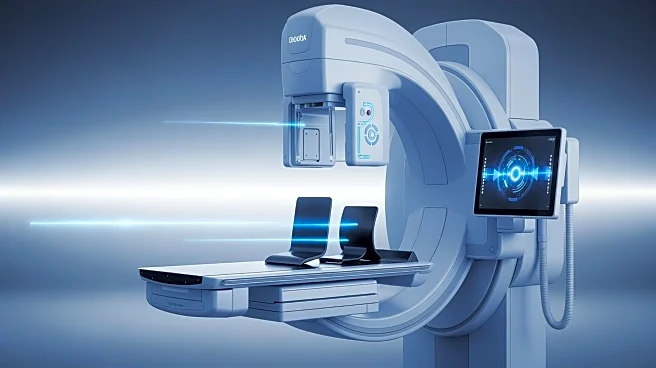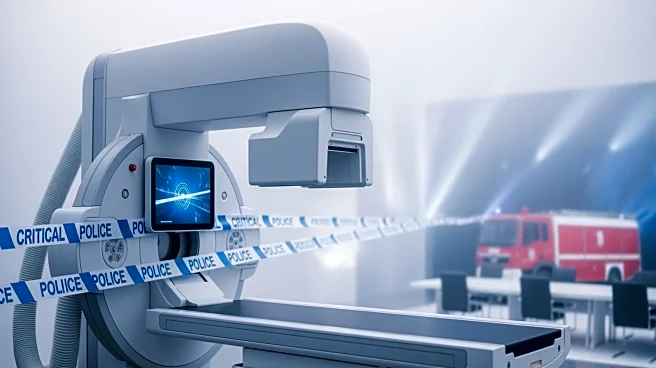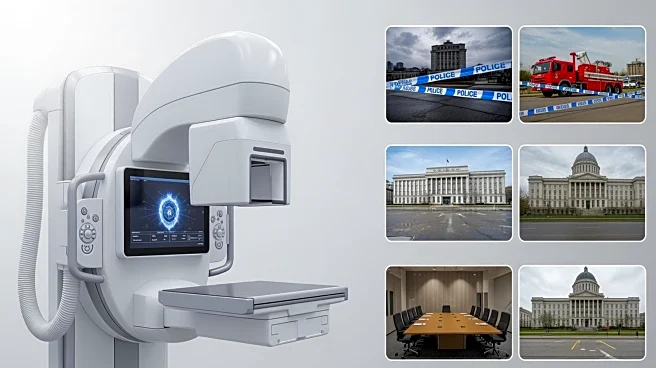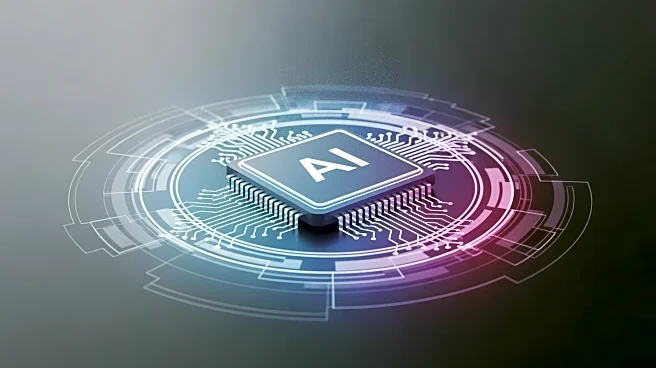What's Happening?
Konica Minolta Healthcare Americas, Inc. has been awarded the Innovative Technology designation by Vizient for its Dynamic Digital Radiography (DDR) technology. This recognition was announced following
the Vizient Innovative Technology Exchange held on September 17, 2025, in Las Vegas. DDR is a novel, low-dose X-ray imaging technique that captures both static images and cinegrams, allowing for detailed visualization of complex joints in motion and physiological cycles. This technology enhances diagnostic capabilities by generating a cineloop that enables clinicians to observe anatomical motion over time, a process known as cineradiography. DDR has demonstrated clinical utility in fields such as pulmonary medicine and orthopedics, as well as in specialized applications like swallow studies and post-bariatric sleeve assessments.
Why It's Important?
The designation of DDR as an Innovative Technology by Vizient underscores its potential to significantly impact the healthcare industry by improving diagnostic accuracy and patient care. Vizient, the largest healthcare performance improvement company in the U.S., represents a diverse client base, including academic medical centers and community hospitals. The recognition of DDR highlights its ability to enhance clinical care and patient safety while also improving healthcare operations. This advancement aligns with Konica Minolta's mission to provide leading-edge solutions that enable healthcare providers to make better decisions more quickly. The adoption of DDR could lead to more precise diagnoses and tailored treatment plans, ultimately benefiting patients and healthcare providers alike.
What's Next?
With the Innovative Technology designation, Konica Minolta Healthcare aims to expand the reach of DDR technology to more Vizient clients, which could include a wide range of healthcare facilities across the U.S. The company is focused on continuing to innovate and provide solutions that meet the evolving needs of healthcare providers. As DDR technology becomes more widely adopted, it may prompt further research and development in medical imaging, potentially leading to new applications and improvements in patient outcomes. Healthcare providers and industry stakeholders will likely monitor the integration of DDR into clinical practice and its impact on healthcare delivery.












